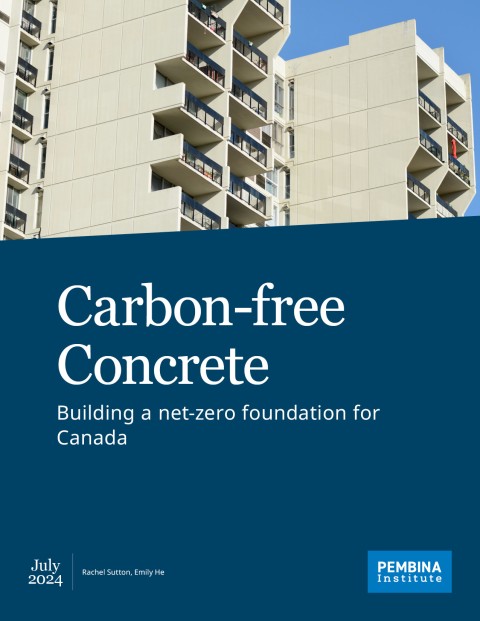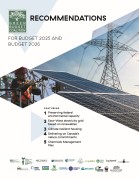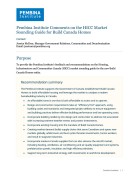There is little in the built environment that does not contain some amount of concrete. This sturdy material is easy to produce, resilient and water-resistant. It is also a significant source of carbon pollution. Efforts to decarbonize the cement industry are underway but are applied unevenly across the country and at a pace that fails to align with Canada’s emission reduction goals.
This report focuses on the decarbonization strategies initiated in British Columbia, Ontario, and by the Government of Canada and the additional actions that each of these jurisdictions can take. Because cement and concrete production is a central economic pillar in Canada and at the provincial level in B.C. and Ontario, shrinking the industry’s carbon footprint in each case will have a profound impact on concrete’s overall emission levels.
Although our analysis is at the preliminary stage, our report offers some important initial findings:
- Most provinces have yet to incentivize cement manufacturers to decarbonize operations; along the same lines, most provincial governments have yet to initiate internal procurement strategies that prioritize lower-carbon cement.
- To date, the federal government has taken significant steps to lower cement’s carbon emissions, but government actions will only meet greenhouse gas reduction goals on the pathway to net-zero if efforts remain consistent through to 2050.
- Technologies are now available that, in combination, could meaningfully curtail the release of greenhouse gases during cement production, in the near term.
- One of the most immediate ways to lighten the carbon impact of concrete is to optimize infrastructure design to avoid its overuse.
- Modifying building codes and standards can catalyze broader use of performance-based, low-carbon materials.
- Governments play a critical role in the decarbonization of cement and concrete. The most impactful policy tools are a consistent, predictable carbon price on emissions; financing mechanisms that offset the higher costs of producing low-carbon cement; and procurement strategies to ensure uptake of low-carbon cement and concrete products.
By layering the early findings listed above on an assessment of current decarbonization practices, the report includes the following recommendations:
1) Governments should set procurement targets
Procurement targets ensure that low-carbon building products will be used in infrastructure projects and signal to cement and concrete producers that investments in decarbonization will be rewarded in the marketplace.
2) Governments should provide funding for environmental product declarations
All levels of government in Canada should support the development of environmental product declarations for building materials such as cement to ensure that levels of carbon intensity are transparent and can be accurately reported.
3) Governments should harmonize decarbonization policies
Government bodies should exchange information on the actions they have taken and their decarbonization policies. Procurement targets that are consistent and aligned across jurisdictions will provide much needed clarity for industry stakeholders by making regulatory frameworks transparent, and market conditions and product demand relatively predictable.
4) Sustain commitments
Cement decarbonization must remain a priority through government cycles given the impact of the industry on Canada’s overall emission levels. Continuation of existing policies (including current financing mechanisms that support industry efforts), especially at the federal level where there is strong leadership, is vital. Reassurances that policies encouraging the production of clean cement will remain in place must be conveyed through party platform commitments and a willingness to engage with stakeholders.















